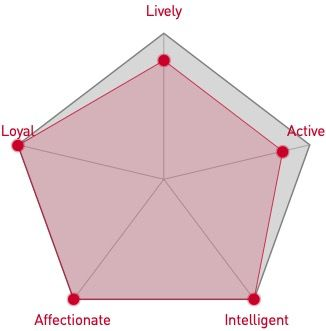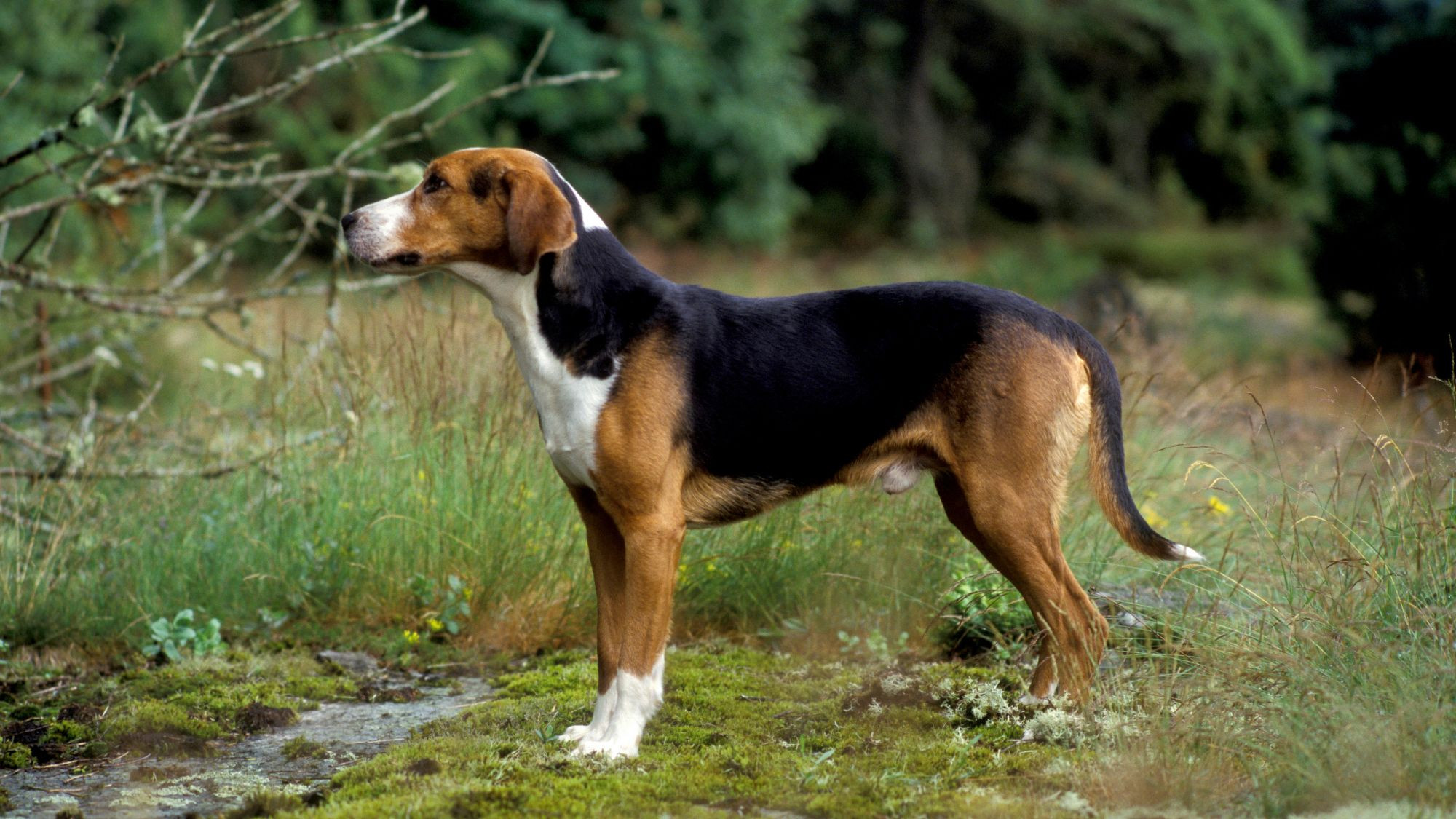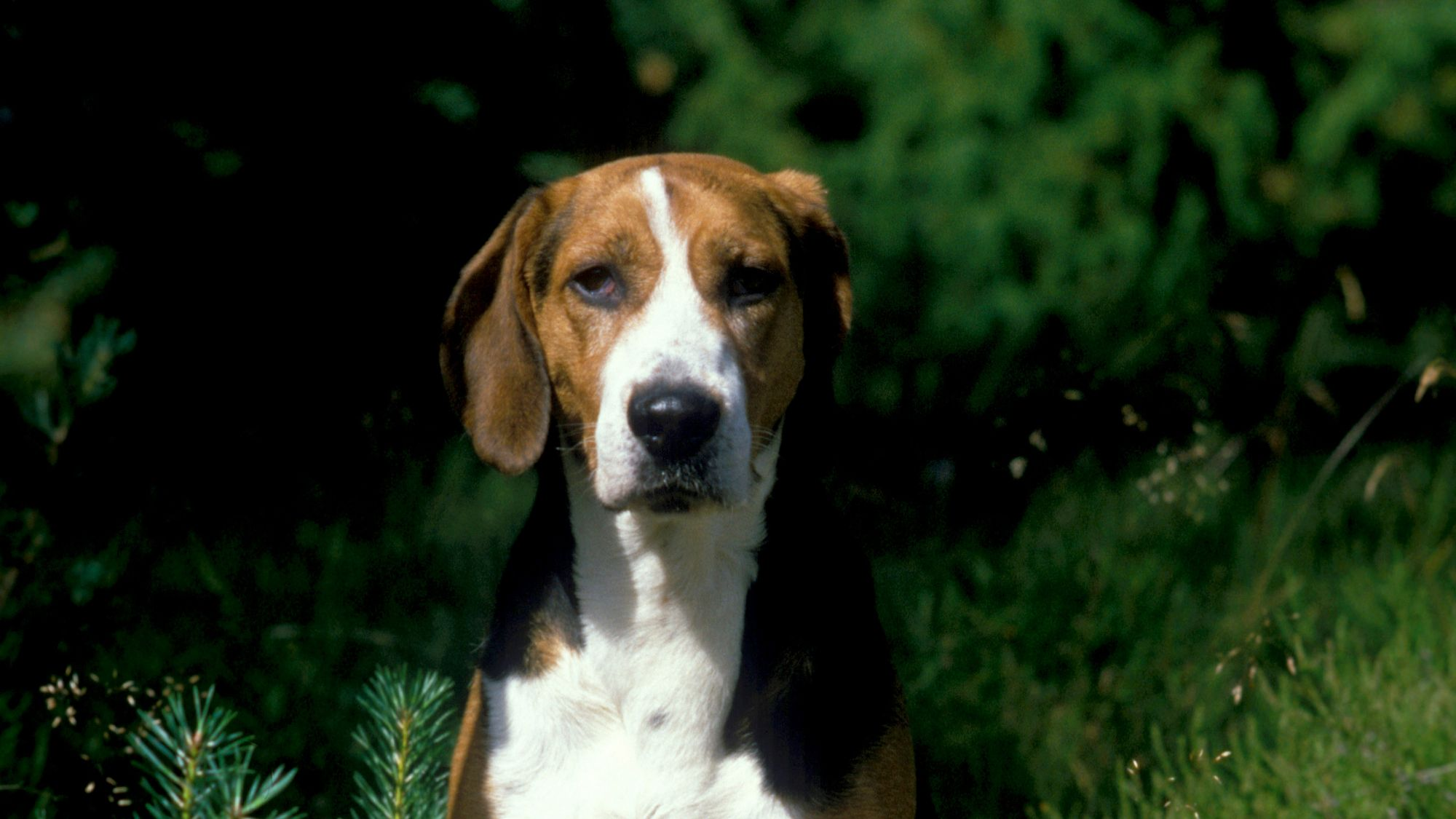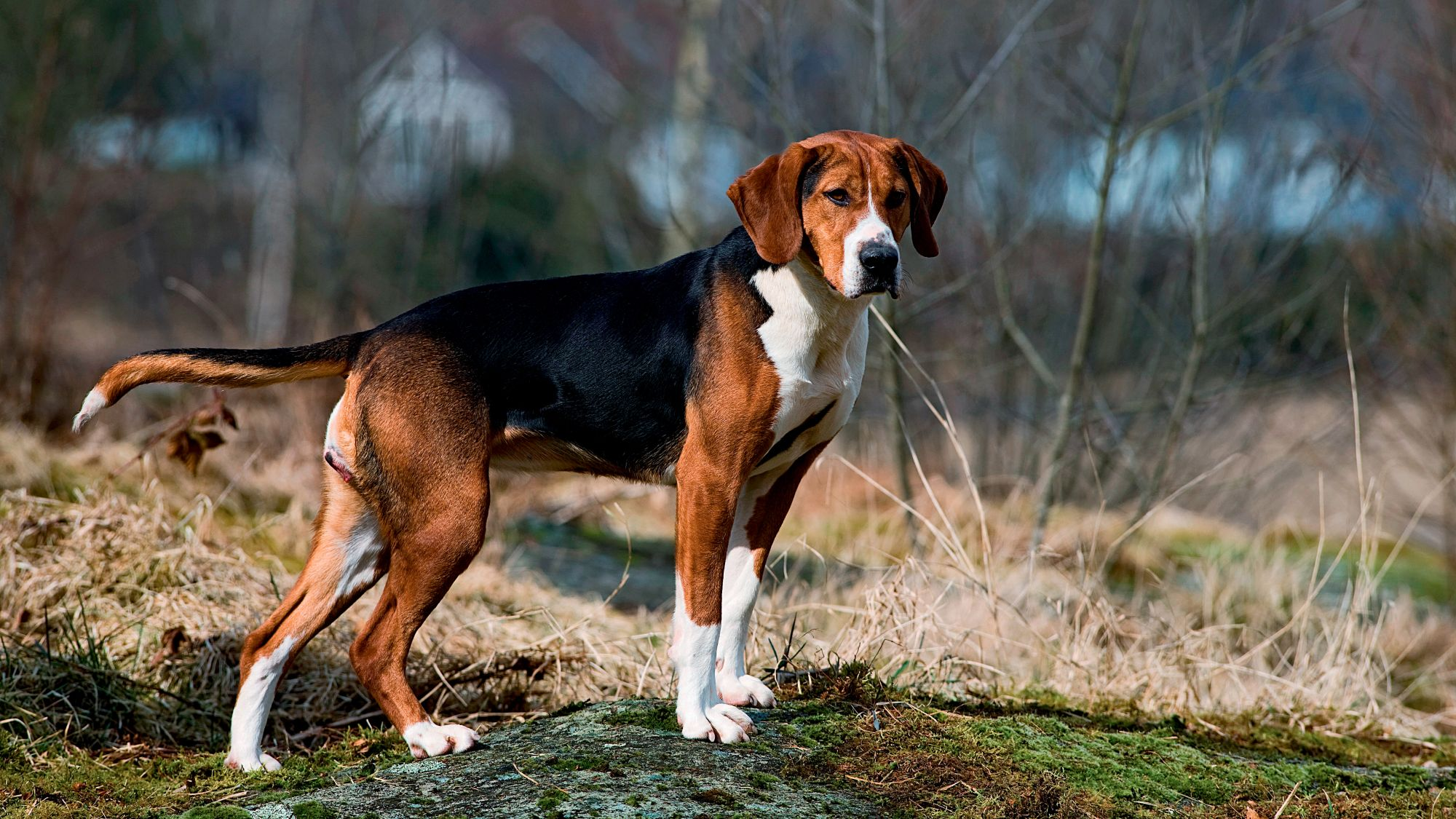
Let's talk Hamiltonstövares
Functional, smart and low-maintenance, it's little surprise the Hamiltonstövare dog is so popular in their native country of Sweden. An affable, lively and gentle breed, the Hamiltonstövare hasn’t met a human they don't like, and makes an excellent addition to any family once trained. They can be a little mischievous when the mood takes them, but it usually manifests in them getting their own way - by quickly learning what pleases their owner. The only problem with this dog is getting hold of one, as there aren't many breeders outside of their country of origin.Official name: Hamiltonstövare
Other names: Swedish Foxhound, Hamilton Hound
Origins: Sweden

| Drooling tendencies |
|
Warm weather? |  |
| Shedding level | Suited to apartment living? |  |
|
| Energy level (high, low, moderate) *: | Moderate | Family Pet? * |
 |
| Compatibility with other pets |  |
Can stay alone? * |
* We advise against leaving pets alone for long stretches.
Companionship can prevent emotional distress and destructive behaviour. Speak to your veterinarian for recommendations.
Every pet is different, even within a breed; this snapshot of this breed’s specifics should be taken as an indication.
For a happy healthy and well-behaved pet, we recommend educating and socialising your pet as well as covering their basic welfare, social and behavioural needs.
Pets should never be left unsupervised with a child.
Contact your breeder or veterinarian for further advice.


| Baby age: | Birth to 2 months |
| Puppy age: | 2 to 15 months |
| Adult age: | 15 months to 5 years |
| Mature age: | 5 to 8 years |
| Senior age: | From 8 years |

1/7
Get to know the Hamiltonstövare
All you need to know about the breed
The Hamiltonstövare is not a pack dog – this is a key difference between them and similar breeds like the Foxhound or the Harrier – but they still get on well with other dogs. They have a strong character, bred to do jobs out in the field on their own or in pairs.
This dog craves company and so doesn't do well alone for long periods of time. Hamiltonstövares form strong bonds with their owners (which helps when training) and will thrive if someone in the family spends the day at home – or, even better, if you spend a lot of time outdoors in wide-open spaces and land they can explore. The typical Hamiltonstövare is highly active and intelligent, and in their element when given tasks that stimulate their canine intellect. Then they'll be more than content to cuddle with you on the sofa at the end of the day.
While affectionate and excellent family dogs, once trained, Hamiltonstövares can be too eager to play to spend time around toddlers safely. Their openness and keenness to please do not make them ideal guard dogs – although Hamiltonstövares are known to like the sound of their own voices, which are loud and distinct, and can be heard from miles away, so may still scare away any uninvited visitors.

2/7
2 facts about Hamiltonstövares
1. Hero of the housewives
This dog has worked its way into Swedish folklore. According to legend, a handsome Hamiltonstövare called Karo travelled across the countryside with an elf called Tomten, helping housewives in need. Fans of the more recent Scandi noir book, The Girl With the Dragon Tattoo, will note that Mikael Blomkvist owned a Hamiltonstövare.
2. Who's the boss?
Hamiltonstövares are strong-willed and thrive most when in the home of firm, consistent and clear owners who they can look to for direction and guidance – in short, owners who make sure the dog knows their place. Like a lot of hounds they can be sensitive so training should be done in a positive manner with encouragement – but don't forget to be clear about who's the boss.
History of the breed
Hamiltonstövares got their name from the man who founded the Swedish Kennel Club, Count Adolf Hamilton. In 1789, Sweden lifted its ban on hunting by ordinary farmers, which created a sharp increase in demand for scent hounds. Hamilton wanted to create a strong, hard working dog to help out in the field, with his dogs Pang and Stella providing the foundation for a new breed.
The Count wasn't interested in breeding pack hunters; instead he wanted hounds that could hunt on their own or with one other partner. He is thought to have used a mix of different German hounds, the English Foxhound and Harriers to achieve what was initially called the Swedish Hound. The breed was renamed Hamiltonstövare in the count’s honour after his death.
The Hamiltonstövare is highly prized in their native Sweden and elsewhere around the world and they have been used as service dogs in the US since the late 1990s, popular due to their versatility and tendency to bond closely with their owners.
The American Kennel Club (AKC) has admitted the breed into its Foundation Stock Service, the final step before full recognition.

4/7
From head to tail
Physical characteristics of Hamiltonstövares
1. Colour
Tri-coloured, usually black with different browns on head, ears and legs, with occasional white marks.
2. Coat
Short, harsh, weather-resistant outer coat.
3. Body
Long, powerful neck with high-set hanging ears that lift slightly when alert.

5/7
Things to look out for
From specific breed traits to a general health overview, here are some interesting facts about your Hamiltonstövare

6/7
Caring for your Hamiltonstövare
Grooming, training and exercise tips
Hamiltonstövares are pretty easy to groom due to their short coats, needing one good brushing each week. Though used to the Swedish climate, their short coat means the Hamiltonstövare isn't particularly suited for extreme weather, whether cold or hot. Canine sweaters welcomed! Check ears for wax build-up or debris once a week, trim nails regularly and brush teeth often to avoid dental problems. Top it all off with a grooming salon visit twice yearly. Though Hamiltonstövares feel at home in households of all sizes, they are best suited for homes with a garden or a more rural environment. They are great hiking and jogging companions, but make sure to keep them leashed when not in an enclosed area or they might run off if they catch a whiff of something interesting. Early socialisation will help your Hamiltonstövare grow into a confident, content, and trustworthy dog. They can be a little stubborn, but also keen to please their humans, so keep their training sessions short and fun in order to retain their attention. Hamiltonstövares are highly food-motivated, but take any treats used as rewards out of daily rations to help keep your dog trim.
7/7
All about Hamiltonstövares
Hamiltonstövares have short coats that require minimal grooming. They shed little and are very clean – they don't tend to have a "doggy" smell about them.
Hamiltonstövares make wonderful pets. They tend to shower their humans with affection. In fact, they form such strong ties to their families that they don't do well being left alone for long periods of time.
Read more on this topic


How to adopt a dog

Things to consider before getting a dog
Sources
1 - Veterinary Centers of America https://vcahospitals.com/
2 - Royal Canin Dog Encyclopaedia. Ed 2010 and 2020
3 - Banfield Pet Hospital https://www.banfield.com/
4 - Royal Canin BHN Product Book
5 - American Kennel Club https://www.akc.org/
